
Could you afford a first class ticket aboard RMS Titanic?
The answer is probably ‘no’
To achieve greatness and grab the headlines, you’ve got to spend cash. White Star Line understood this mantra – exercising a healthy budget to construct their legendary trio of Olympic-class ships; Olympic, Titanic and Britannic. WSL bigwigs expected passengers to splurge their bank accounts, too.
As history will currently attest, these Olympic-class leviathans of grandeur remain the ultimate benchmark of decadent Transatlantic excursion. Representing an investment of expenditure, nothing screamed of profit more than White Star Line.
Modern equivalents don’t even come close, despite contemporary efforts to recapture WSL’s long-evaporated mantra. As boasted by Henry Royce (1863-1933) of Rolls-Royce fame, "quality will remain long after the price is forgotten.”
As the engineer behind the groundbreaking 40hp/50hp Silver Ghost, Royce recognised and respected high-quality service – choosing White Star Line’s SS Baltic to kick-start the import of Rolls-Royce motorcars into North America.
And, in keeping with the line’s famous strength and indefatigable reputation, the quality of RMS Titanic certainly cannot be contested. The swimming pool still has water in it.
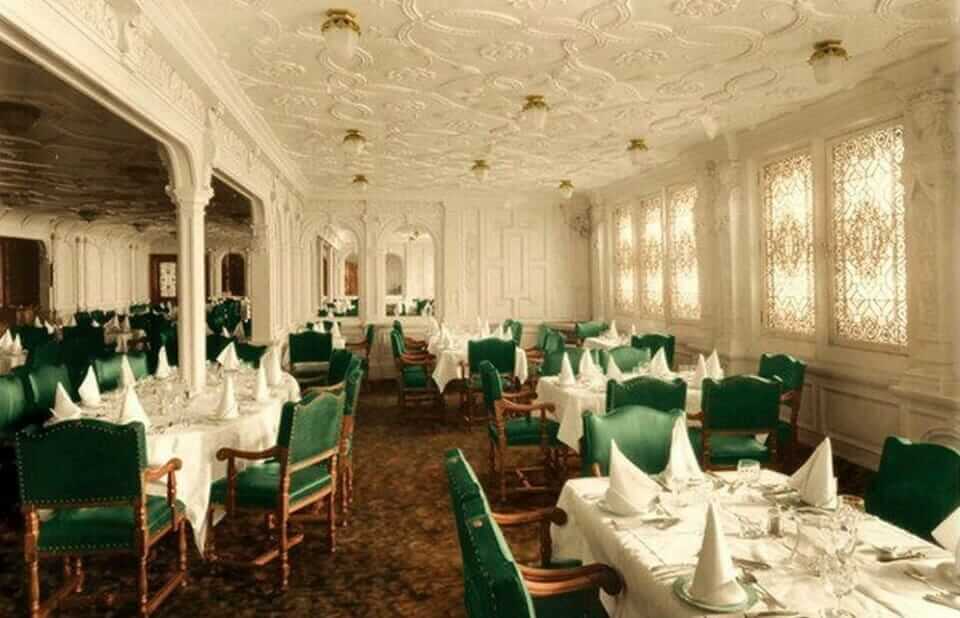
Thing is, quality never comes cheap, especially when regarded as the Rolls-Royce of ocean travel. Back when the average house retailed for £230, RMS Titanic cost £1.5 million to construct between March 31, 1909 and April 2, 1912 – the equivalent of £151.5 million with contemporary inflation. Should you try to build a ship of Titanic’s dimensions in our modern climate, you’d be looking at roughly £315.8 million ($400 million).
As such, tickets aboard RMS Titanic were never intended to be cheap. There was never any intention to create premium value at sea – pay up, or move onto a cheaper brand. Simple. It may sound self-destructive, but there was method to the overpriced madness.
The marketing boffins at White Star Line remained perfectly aware that society’s elite would never degrade themselves to anything other than exemplary one-upmanship between their peers. Their loaded chequebooks slammed open without a moment’s delay, despite the ludicrous asking price.

First class – Parlour suite (Many ££££)
Could you afford this? Not unless your double-barrelled surname happened to be Esso BP McShell, or your father stemmed from a long line of cousin-chasing aristocrats.
This was the extreme crème-de-la-crème. The phrase ‘most splendid’ comes to mind when casting an eye over Titanic’s luxurious first-class parlour suites, of which were limited to four per ship; two each on B and C Decks, aft of the forward landings of the Grand Staircase. RMS Olympic boasted almost-identical suites for those who wished to part with £512, six shillings and 10 pence per voyage.
That may not sound extravagant by modern standards, but it’s worth remembering the typical annual wage in 1912 resided around the £160 mark (before tax was applied) – making the Parlour Suite worth three years (and a bit) of mortal pay.
By today’s standards, the cost of RMS Titanic’s First-Class Parlour Suite would amount to £40,100 – or roughly $49,680. And that was not a return ticket.
In the height of peak travelling season, this cost would spiral to £870 (£84,600), as was so often paid aboard RMS Olympic, until her retirement in 1935. The scary part? That eye-watering fee didn’t always include your meals. If you wished to dine at the riotously exclusive À la carte restaurant (located on B-Deck aft of the Aft Grand Staircase), then you could expect to pay further expense.
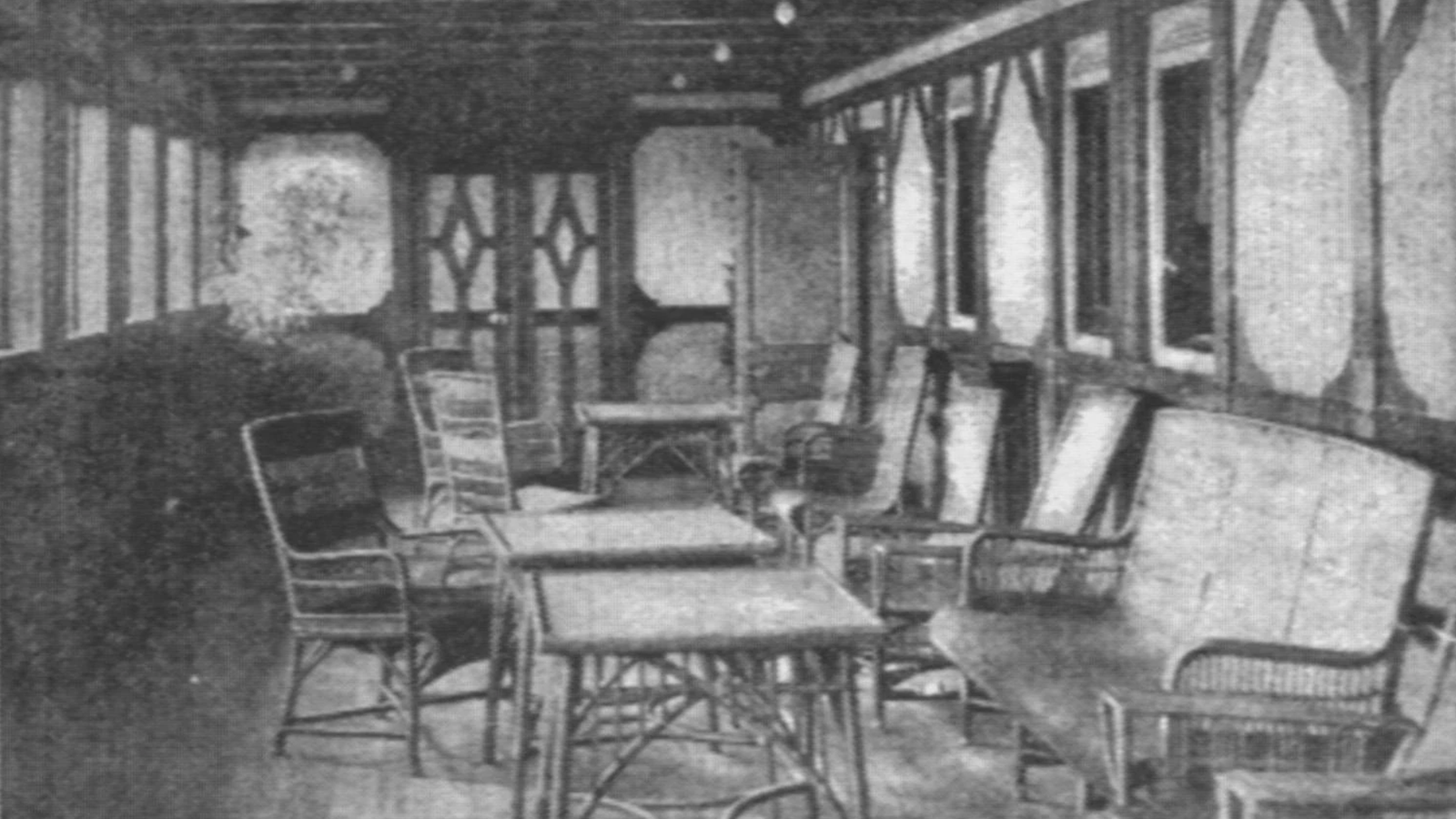
All that money guaranteed a VIP service, alongside accommodation smart enough to warrant Oxford University’s honorary degree. As the pièce de résistance, each ‘Deluxe’ parlour suite on Titanic’s B-deck boasted a 50 ft (15 metre) stretch of private promenade. Y’know, so that you could manipulate your younger wife-to-be with a healthy dose of Edwardian anger in the comfort of exclusive surroundings. Guffaw.
This uber-stylish private deck connected to the first-class gangway entrances immediately forward, allowing copious amounts of luggage to be directly loaded into the expansive suites. After all – old-money-types never travelled light. Those priceless artworks, amid bespoke swathes of jewellery and furs, would be traversing the North Atlantic alongside their proud owners, too.
Whereas steerage passengers had to make do with only a rigid bunk bed, the Parlour suites each comprised two large bedrooms, two walk-in wardrobes, a private bathroom, a plush lavatory, and a spacious sitting room.
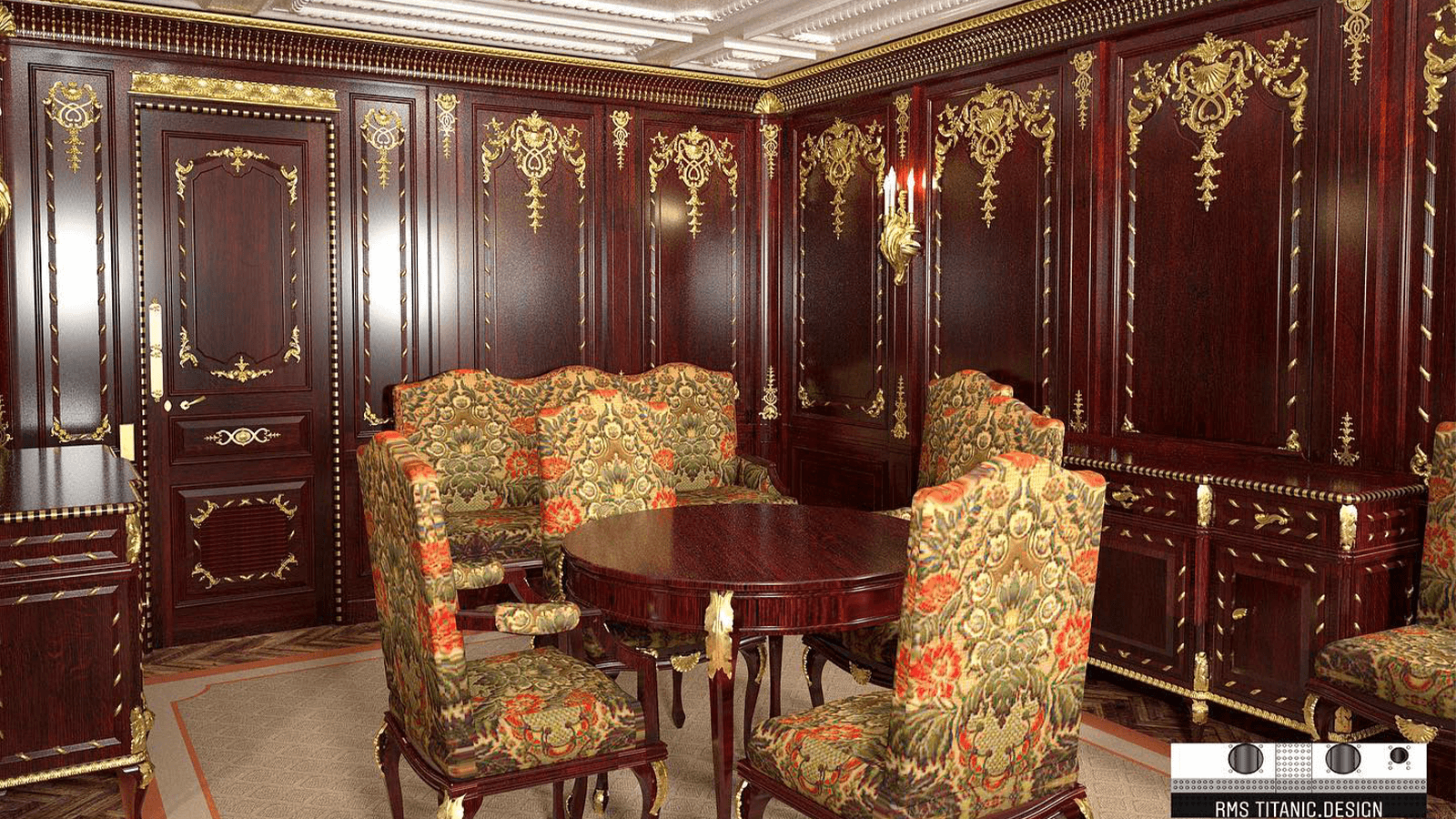
Each Parlour sitting room was a lavish affair, designed for receiving small parties of guests, or – in some cases – lovers, offering visual splendour with a faux fireplace, large card table, writing desk, sideboards and sumptuous chairs.
The Titanic’s private promenade decks were unique to the Belfast-built vessel, decorated in half-timber Tudor-style panelling, with accompanying wicker deck chairs (built by Dryad of Leicester), tables and potted plants.
Such was the allure of this decadence, the chairman of White Star Line – J.Bruce Ismay – occupied the port-side Deluxe Suite, whereas the starboard suite was procured by American millionaires Mrs. Charlotte Drake Cardeza, her son, and entourage.
Sadly, the pot plants did not survive.

First class suite/stateroom (£££)
Could you afford this? Unlikely, unless you happened to be the Irish Catholic wife of an American mining engineer, inventor, and self-made member of fashionable society.
While public consensus paints all of Titanic’s first-class passengers as a slick group of judgemental champagne-sippers, the giddy heights of a Parlour suite remained unobtainable even for most first-class ticket holders.
A total of 120 'special staterooms' on B- and C-Deck were richly appointed in 11 different period styles – including Louis XIV, Georgian, Jacobean and Italian Renaissance – could be had for £247 and 10 shillings each. That’s £19,350.25 to the likes of you and I, or $24,033 to those across the pond.
For shelling out that level of expenditure, you would expect the privacy of your own toilet, right? Wrong. As was standard practice of the era, the majority of first-class bathrooms were shared. Communal toilets were divided by sex, and you had to alert a steward should you wish to draw a bath. Even then, it depended on availability.
Fresh water for your bath? Dream on. Due to limited supply throughout the voyage, you instead had to contend with salt water from the North Atlantic. Cold comfort, certainly, when learning that exclusive fresh-water rights were reserved for those with a private bathroom in the Parlour Suites.
Yet – there was a secret. If you paid just a little bit more, and you could afford it, various Staterooms and First-Class suites on B- and C-deck offered a luxurious private lavatory. If you were opting for haute cuisine packed full of unintentional laxatives, then the extra cost was undoubtedly worth paying.
When compared to other liners of the day, Titanic showcased an impressive ratio of private bathrooms to passengers, setting a trend that would eventually revolutionise health and safety standards. Ironically, it was this upgrade in shipping legislation that would see RMS Olympic off to the breakers' yard in Tyneside.
While residing in first-class, one could enjoy fresh bed linen each morning, before tea and continental pastries were served prior to breakfast service. There was no room service for any passengers out with special requests from the Parlour suites – you had to attend the dining room to be served full meals.
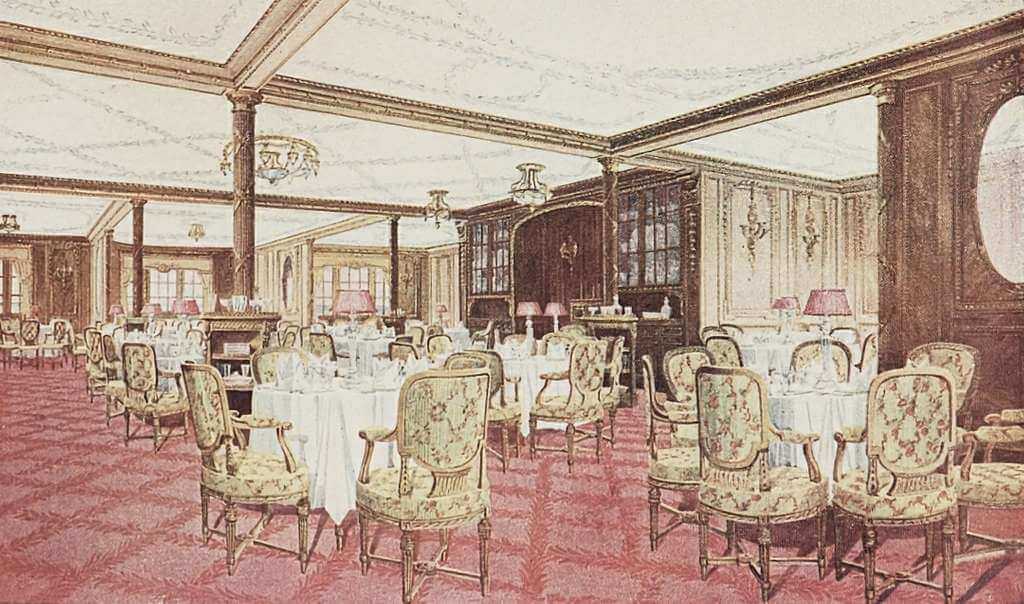
Passengers from the staterooms and regular first-class suites would then receive any clothes previously sent for pressing, and any shoes dispatched for polishing, should travellers have taken advantage of the service – for which there was a small fee.
Larger, and slightly more expensive, staterooms on Titanic had private entrances, separate servants' quarters, and adjoining doors; to accommodate families and servants. Sometimes, working for society's elite had perks - if you ignore the concept that a frozen fate awaited you during the voyage.
If the steep cost of a regular first-class stateroom or suite felt too outlandish, then there was no need to panic. Instead, two further options to keep you within the social elite could be chosen.

First-class standard (££)
Could you afford this? That very much depends on the going rate for a kidney.
First-class accommodation filled almost all of B and C-decks, but also commanded large sections on A, D and E-Deck. This is where you could find the standard first-class cabins, many of which were interchangeable between first- and second-Class, depending on demand.
Beyond the elegant boundaries of the Grand Staircase and first-class suites, the corridors of D- and E-Deck felt somewhat spartan when compared to the white ‘Venesta’ panels, archways and decorative attributes of B- and C-Deck.
The corridors that led towards standard first-class cabins did not feature handrails, carpet runners, nor any signs of ornamental frieze – but that lack of non-functional dressing saved a pretty penny when booking a ticket. Residing in a standard first-class cabin would require £82 and eight shillings – which translates to £6444.39/$8005.
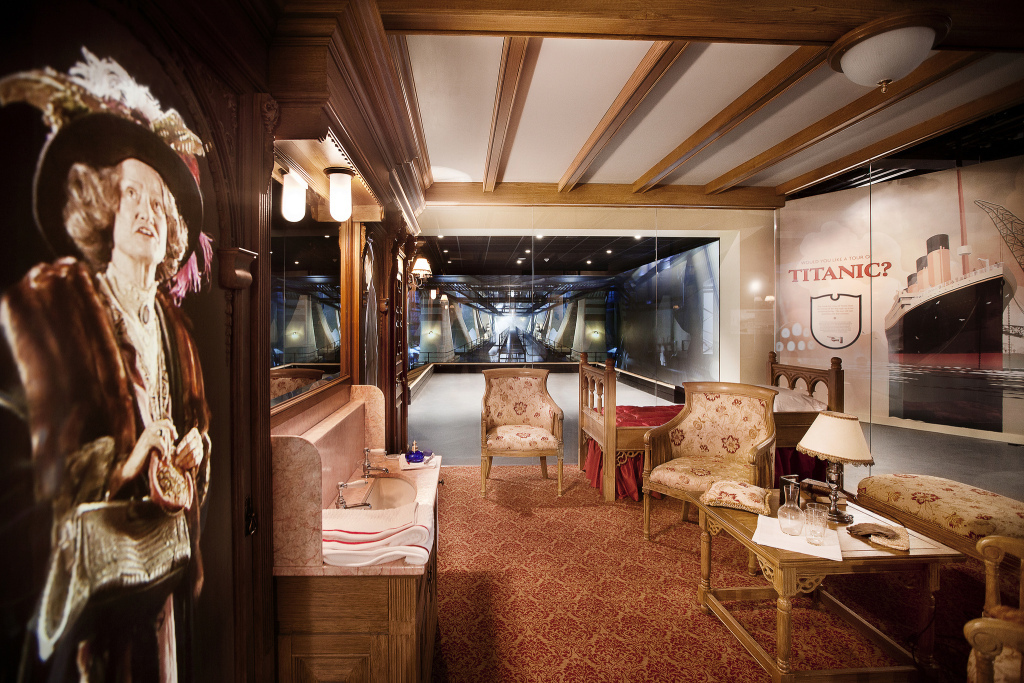
These two-berth cabins may have felt gaunt and barbaric when compared to the overbearing refinement of Titanic’s exorbitant Parlour suites, but there were classy savings to be had when slumming it – with only a dressing table, horsehair sofa, wardrobe, and marble-topped washstand (with basin) to contend with.
The best part? All of the first-class services remained open to those who opted for the lesser form of daylight robbery, with the smoking lounge, library and gymnasium available during most times of the voyage.
Furthermore, Titanic’s top-tier dining experience was also available to anyone holding a first-class cabin, and the food would certainly have put Gordon Ramsay in his place.
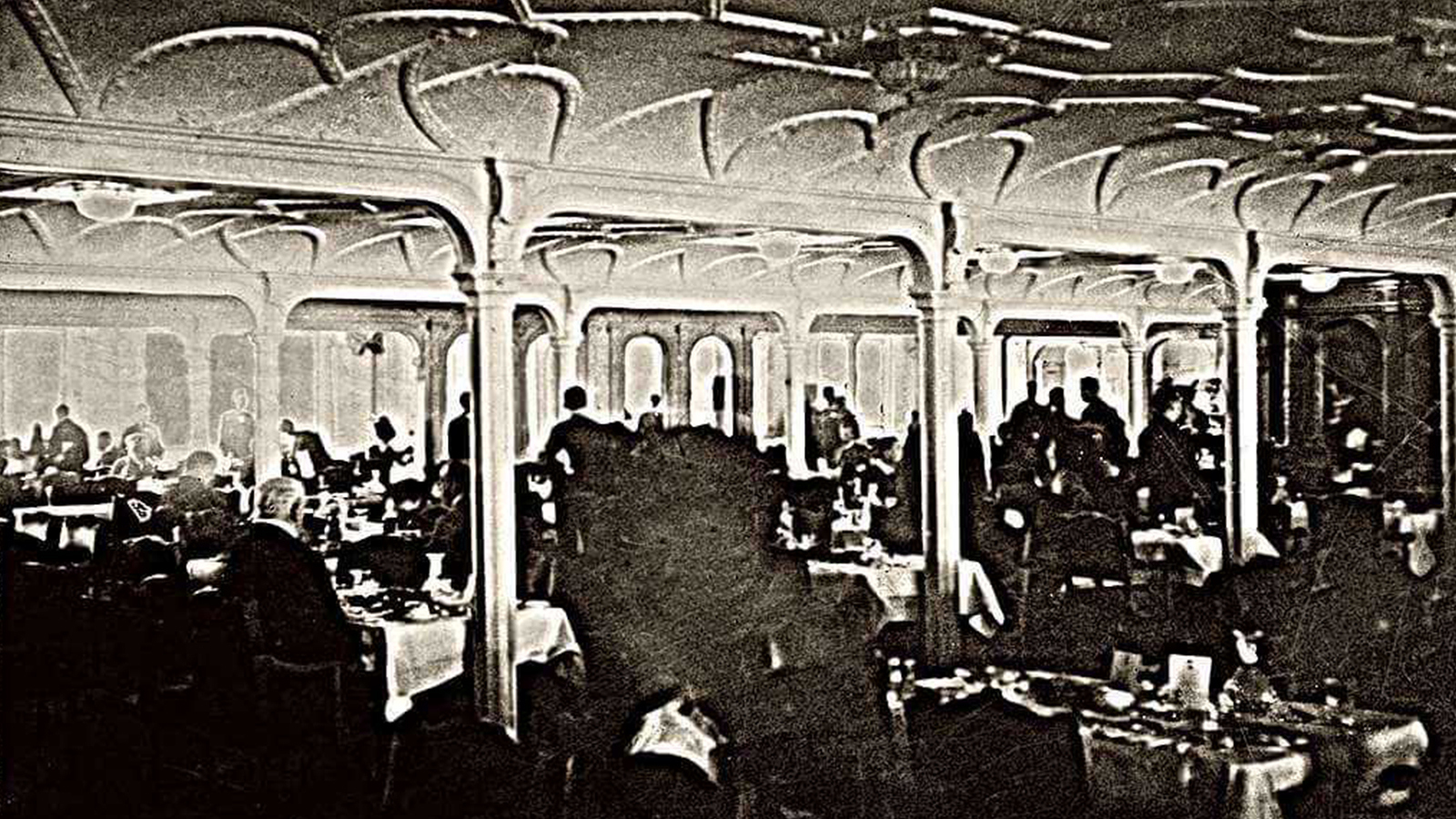
We’re talking here about roast beef, champagne, salmon and seasonal vegetables, washed down with lashings of fine wine and brandy, and complimented by cream deserts so dense that light would bend around them.
Once again – sounds almost inconsequential when looking at the vast buffets of delicate edibles produced by Cunard most days. However, put these First-Class menus from Titanic into perspective and you’ll quickly establish it’s a world away from Third-Class fayre, even if most standard first-Class tickets didn’t include meals and incurred extra costs.
Don’t believe beef and potatoes were first-class? Check out this third-class menu dated April 14, 1912. Look down at the left-hand corner. That is indeed ‘Gruel’ listed among the otherwise pleasant-sounding meals. Except for the Rice roup. There’s a saga for another time…

First-class single-berth cabin (£)
Could you afford this? Quite likely, after you’ve sold Grandmama for medical research, shot your chauffeur for his wallet, defrauded the Post Office, and faked your death to claim an insurance payout.
Of the 330 first-class cabins on board RMS Titanic, 100 of them were single-berth rooms. These little pockets of premium accommodation opened the gateway to RMS Titanic’s first-rate services, without having to re-mortgage your house seven times over to acquire wider-reaching quarters.
As with the standard first-class cabin, those sleeping in the single-berth arrangement had all the amenities of a larger room, minus the crippling White Star Line remittance. Ok, so you inevitably had to share toilet facilities with others, and courtesy of all that rich food timing was of the essence, but the monetary savings made up for the communal hilarity.
This was your cheapest option into the vast world of opulent Transatlantic travel – retailing for £26 and 10 shillings. That’s £2071.56/$2573 by today’s inflation standards.
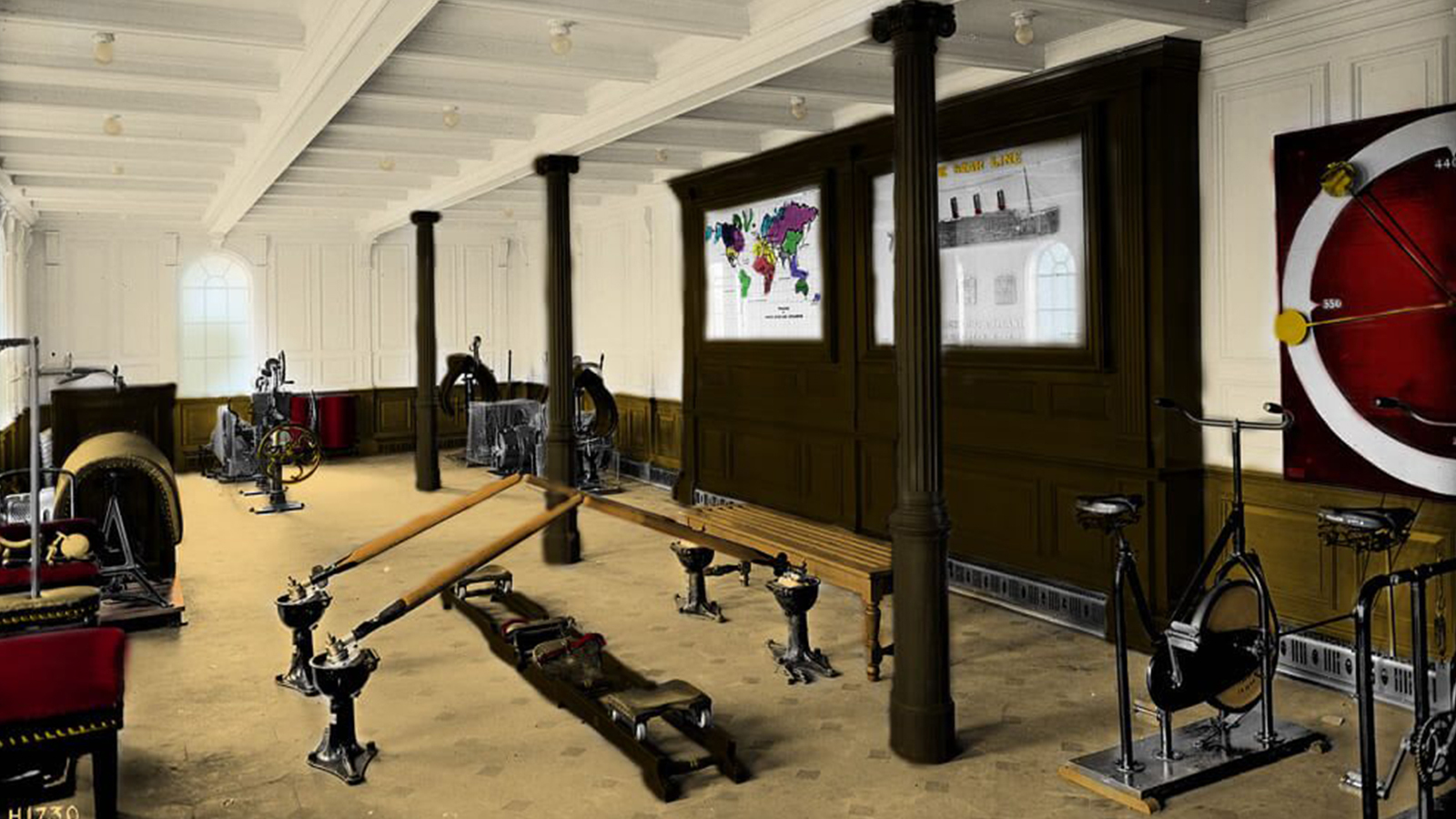
So, what were you missing out on when compared to the larger berths? For starters, you didn’t have anywhere near the same amount of space, nor did you have one of RMS Titanic’s funky “tipped” foldaway basins (which could be hinged back into the cabinet) or any extra furniture.
Naturally, you didn’t get to enjoy a private promenade deck, and you had to walk further to partake in card games and the evening dinner service. Ach, the humanity! Avert thy eyes children…
What you did get was still rather swish. While those in second-class had to put up with fetching their information and artefacts, you could enjoy use of the call button and summon a steward.
While passengers in third-class *shudder* sat in perpetual blackness, you could languish beneath a reading lamp and store items in your dedicated wire-mesh basket. That opium was now within easy reach before bedtime.
Finally – you had an electric heater to keep the cabin toasty. Although RMS Titanic was centrally heated, the ship struggled to keep an ambient blanket temperature. Lady Duff-Gordon wasn’t always wearing her furs in a bid to upstage lesser mortals, but because the ship’s large open spaces were colder than most humans prefer. Well, that and to upstage lesser mortals.
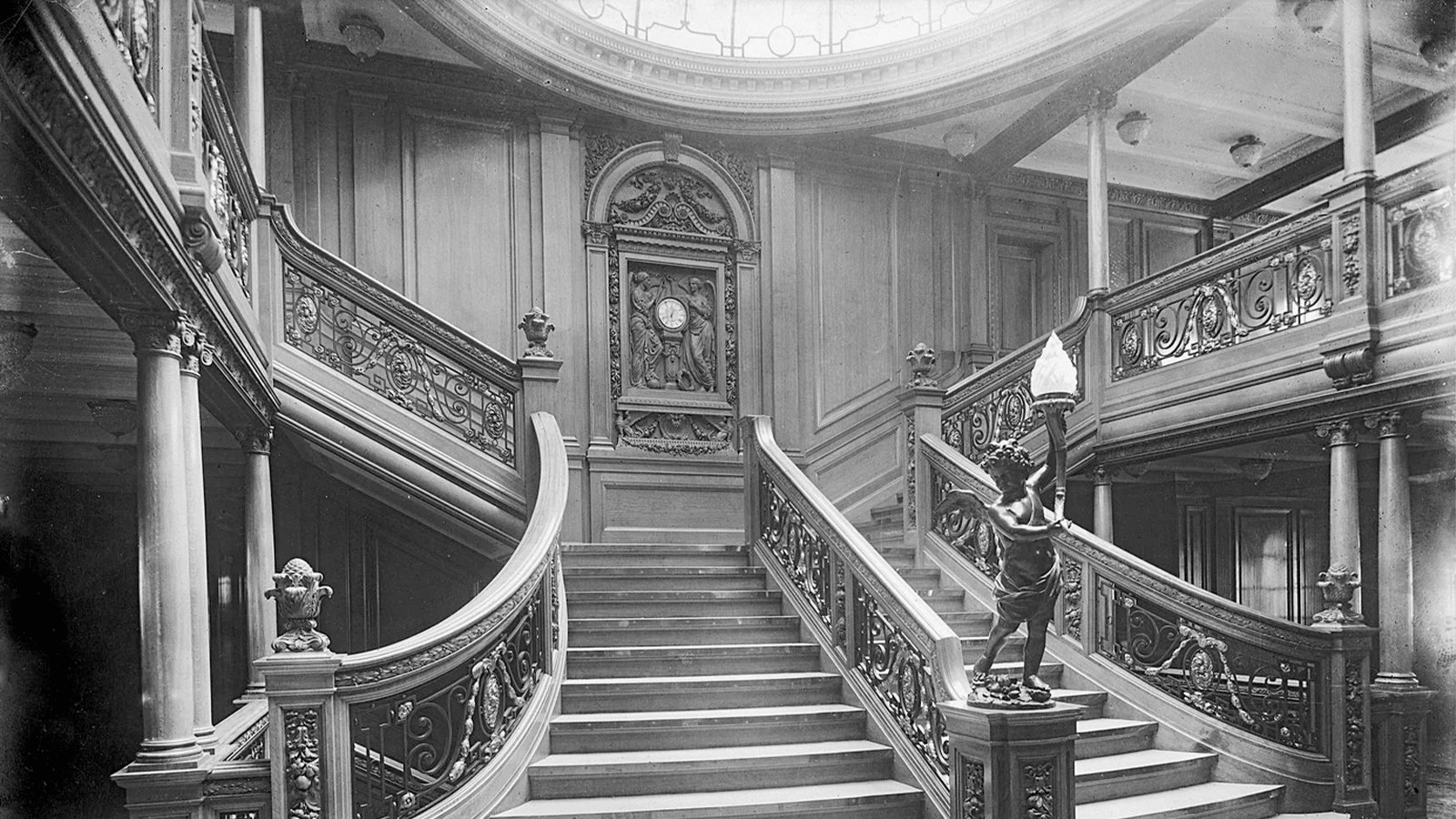
Pair that with the icy waters through which RMS Titanic sliced, and heating was something typically reserved for old money, the nouveau-riche, and anyone in first-class.
Although you were on the lower rung of White Star Line’s first-class compartments, bagging a single-berth ensured that an electric bed warmer could also be requested from a steward. Not that these would keep you warm in the soon-to-sail WSL lifeboats.
As a final noteworthy aspect to help you sleep at night, those in standard Second-Class accommodation had paid more than you – each top-tier Second-Class cabin costing £39 (£3048.72/$3787).
Worth the cost? Let me put it this way – those in first-class had a much better chance of reaching a lifeboat once disaster had struck. You had (roughly) a 62 per cent chance of survival as a first-class passenger, whereas barely 25 per centage of steerage passengers made it to New York.
There’s some food for thought. Unless you were male, where only 20 per cent witnessed a sunrise on April 15. With that gift of hindsight, you couldn't afford not to plump for first-class.












